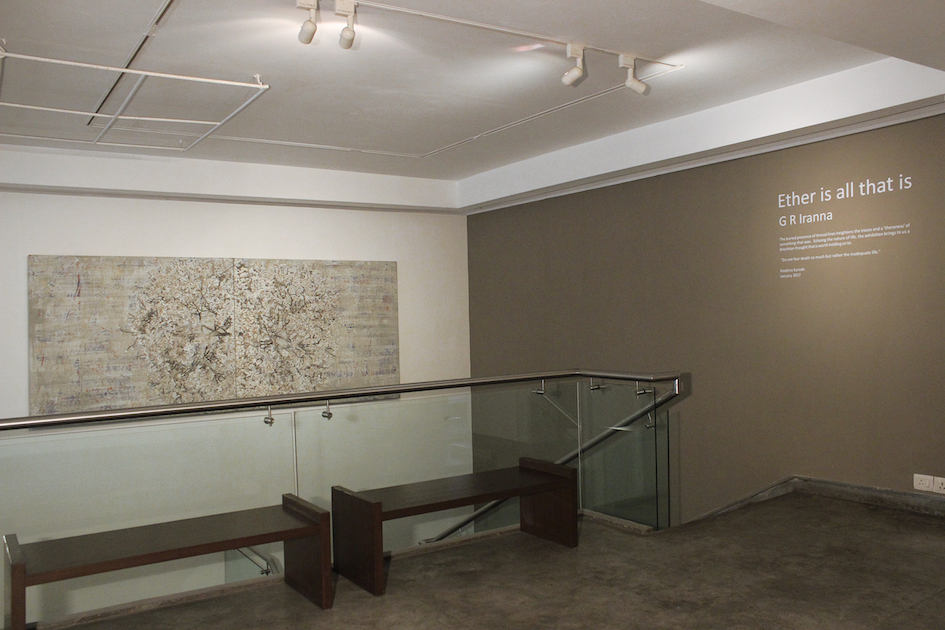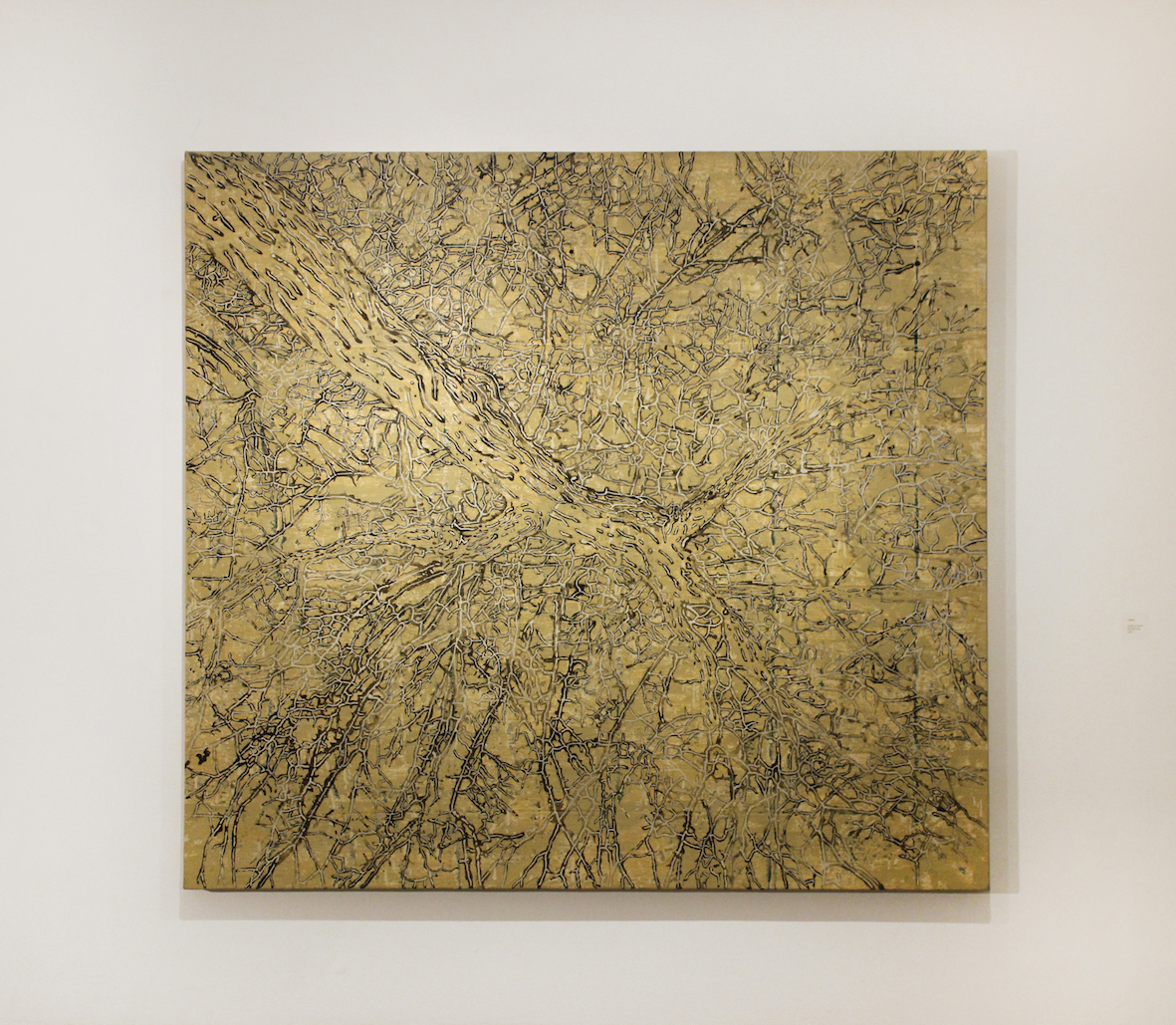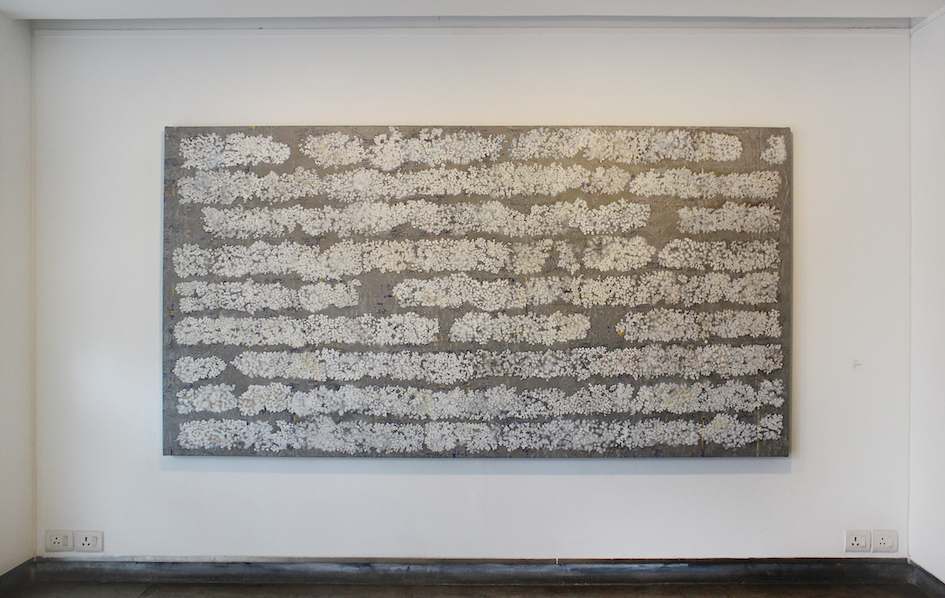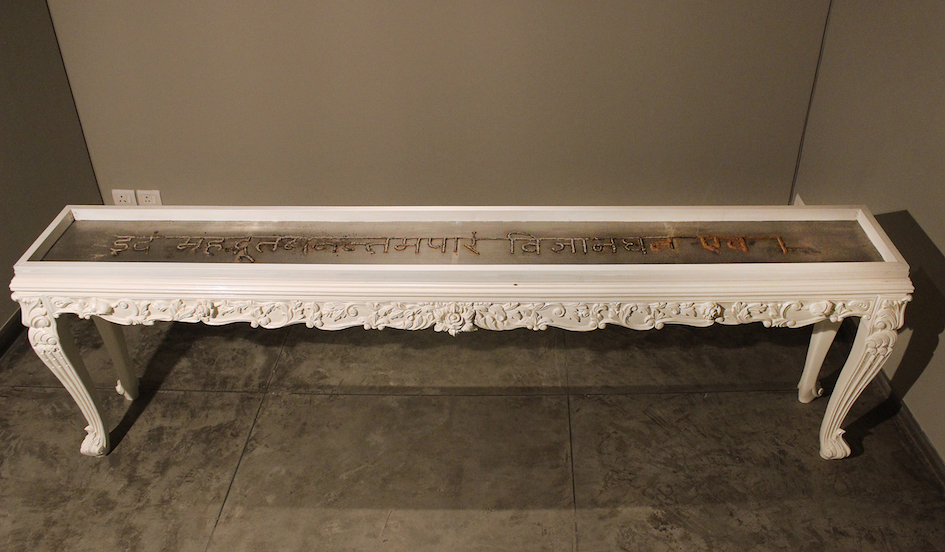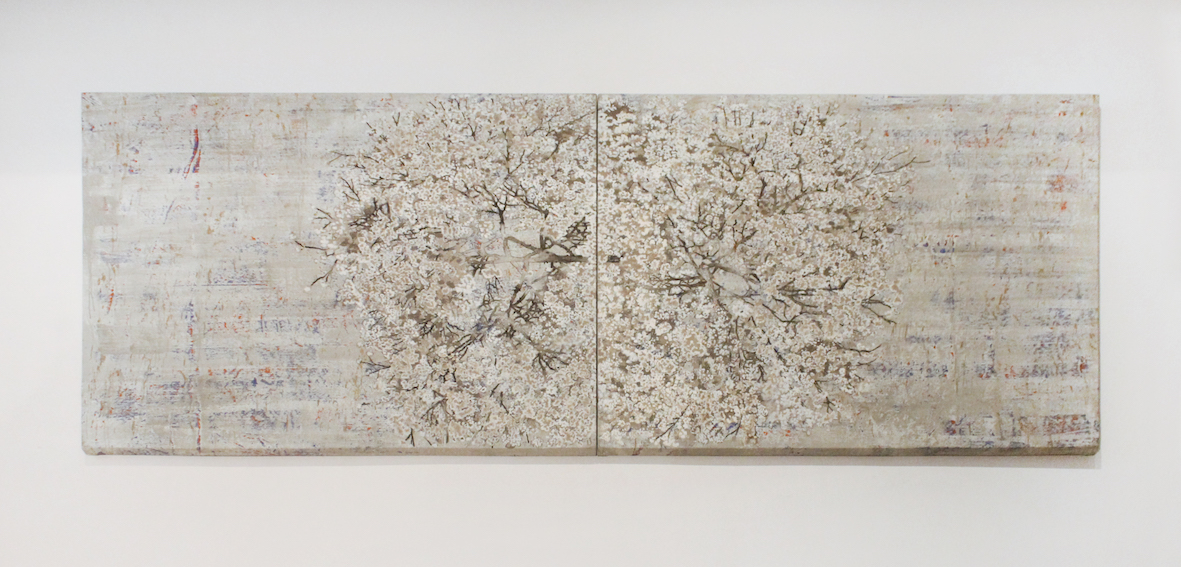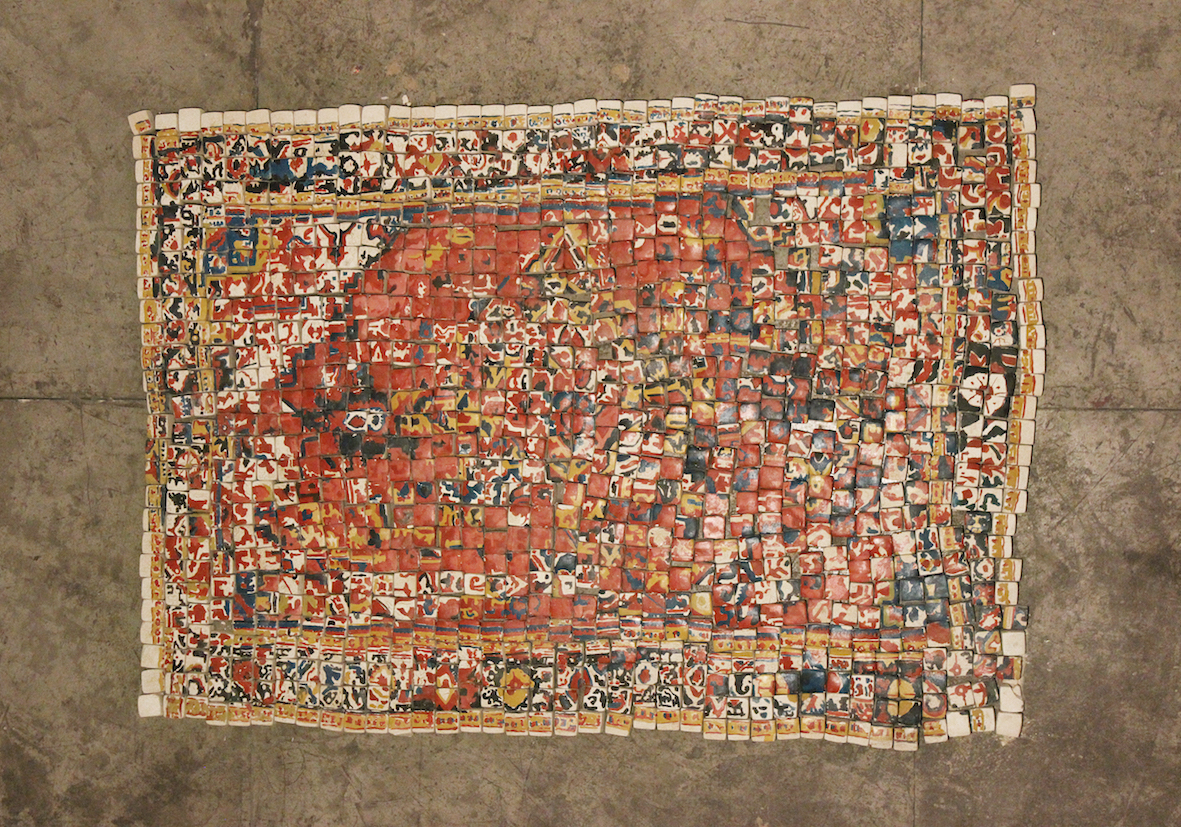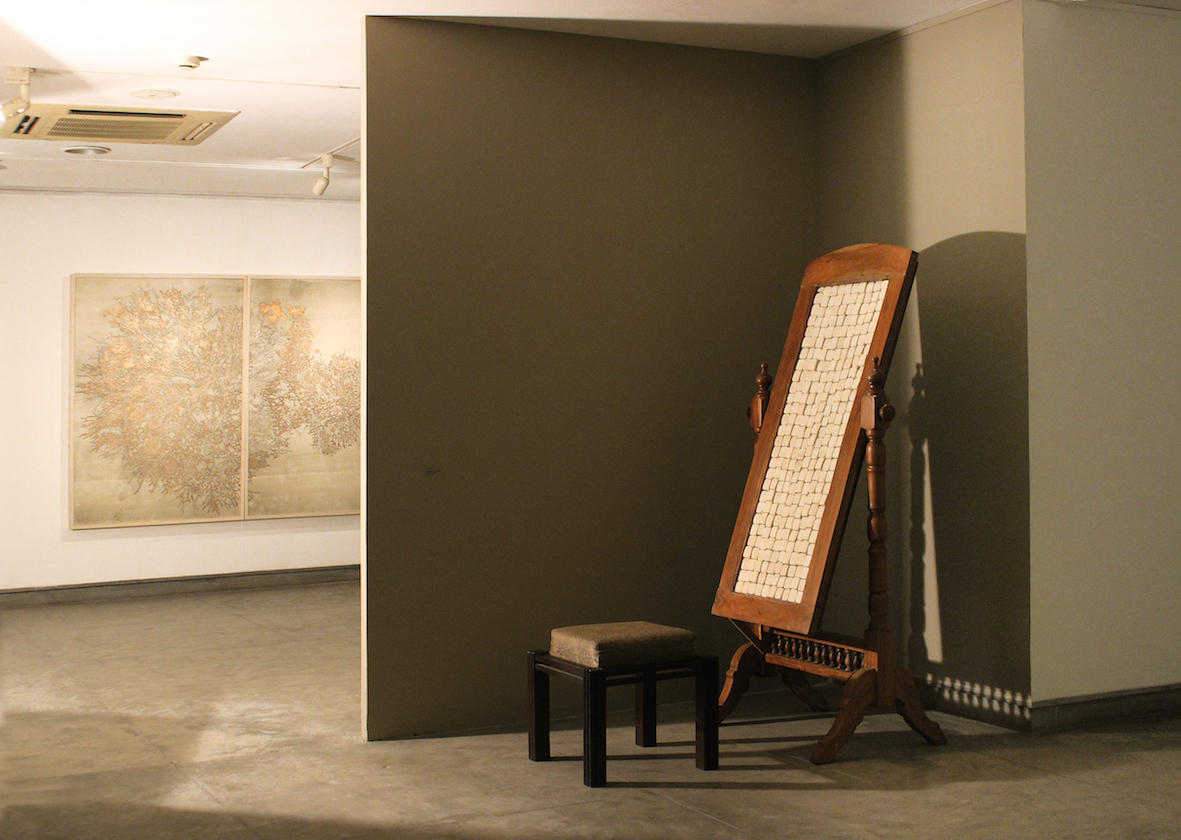G R Iranna ponders the meaning of life in his recent solo exhibition at Gallery Espace in New Delhi.
“This great Being is endless and without any limit. It is a mass of consciousness only”. Taken from the ancient Indian scripture Chandogya Upanishad (VIII. 3. 4), the verse encapsulates the nature of existence and introduces G R Iranna’s solo exhibition “Ether is all that is”, on view at Gallery Espace, New Delhi until 8 March 2017.
Unfolding at three levels – through material, form and time, the exhibition “Ether is all that is” at Gallery Espace in New Delhi traces G R Iranna’s exploration into the realms of the unknown, beyond the abstract form and its motivating thought, into a formless, eternal state. Being careful not to limit the visual and conceptual experience of his show, he carefully chose a title that resonated the deep resolve of his practice.
The smell of sandalwood wafts through the gallery space and is the first encounter of experience. In a small, dimly lit room of the gallery is the long console, its top embedded with a meshing over which is laid out the burning words “Idaṃ mahadbhūtamanantamapāraṃ vijñānaghana eva.” Sandalwood powder or chandana is known for its medicinal properties and to spiritual seekers is considered a metaphorical link between the earth and the sky, between the finite and the eternal. The continuous burning of the sandalwood powdered words leaves a trace of ash, and in doing so defines the moment material form becomes immaterial. The words and all that they reveal return to ‘ash’ – the medium that the artist chooses to draw with, coat onto or burn off.
While speaking with Art Radar, G R Iranna elucidates the material context of his show by saying, “We treasure diamonds, but to nature they are but rocks.” With the understanding that everything is to return to dust, Iranna began to think of how to visually communicate the transient. He began using charcoal a few years ago and evolved to employing holy ash as a way to punctuate human mortality more vividly. Known in the Hindu tradition as vibhuti when smeared on one’s forehead, it signifies the eternal consciousness within us while also serving as a constant reminder of our eventual consummation.
While in Mexico, Iranna came upon a tree that was 3,500 years old and standing beside its massive trunk, looking upward towards the network of branches it supported, the artist marvelled at this silent witness of times gone by. Filled with a sense of wonder and humility, he explains the tree’s repetition in his work as a metaphorical reminder to us existing as observers, playing out our part within the larger, cosmic scheme of things. Of the many relationships we sow through our lives, some get charred, few smolder and still others continually take root. Iranna plays off these as he paints the branches of his trees with ash in a series of works entitled Ethereal Tree, Beautiful Burning Tree, Lofty Tree, Heaven on Water, all executed in 2016.
Also part of his repertoire of forms is that of the carpet – laid out as a decorative floor covering or a mat for prayer. The carpet wears away like the memories of those whose feet have walked over it, until the day it too is threadbare and returns to dust. Made of brightly painted ash bricks, a rich patterned floor work Ethereal Beauty (2016) puts the point across quite lucidly.
In a corner of the gallery is placed a full length standing mirror, except the mirror’s surface itself is replaced with cubes of ash. Iranna’s belief is that self-reflection explains the relationship between the ego and the body and in this work entitled Loved Ash (2016), the self image is in fact, ash itself.
Iranna has been working on this body of work for the last two years. The first work to be publicly presented was Garbh, an egg shaped larger than life form, supported by Gallery Espace’s Founding Director, Renu Modi for the Kochi-Muziris Biennale 2016. Iranna shares his intent to sculpt a form that was solid and strong but also fragile. Built in a small room, with a narrow opening, Garbh consumes the space it occupies and by the end of each day sheds a circle of ash around itself.
The work will need to be destroyed at the end of the Biennale in March and with it, the work will be complete – its birth from and end into the formless, while leaving a daily trace of residue as a memory of its existence. Coming full circle to the first piece of his gallery solo, Iranna successfully imparts a multi-sensorial experience through a predominantly visual language that takes the viewer through life’s journeying in a rather simple, yet purposeful way.
